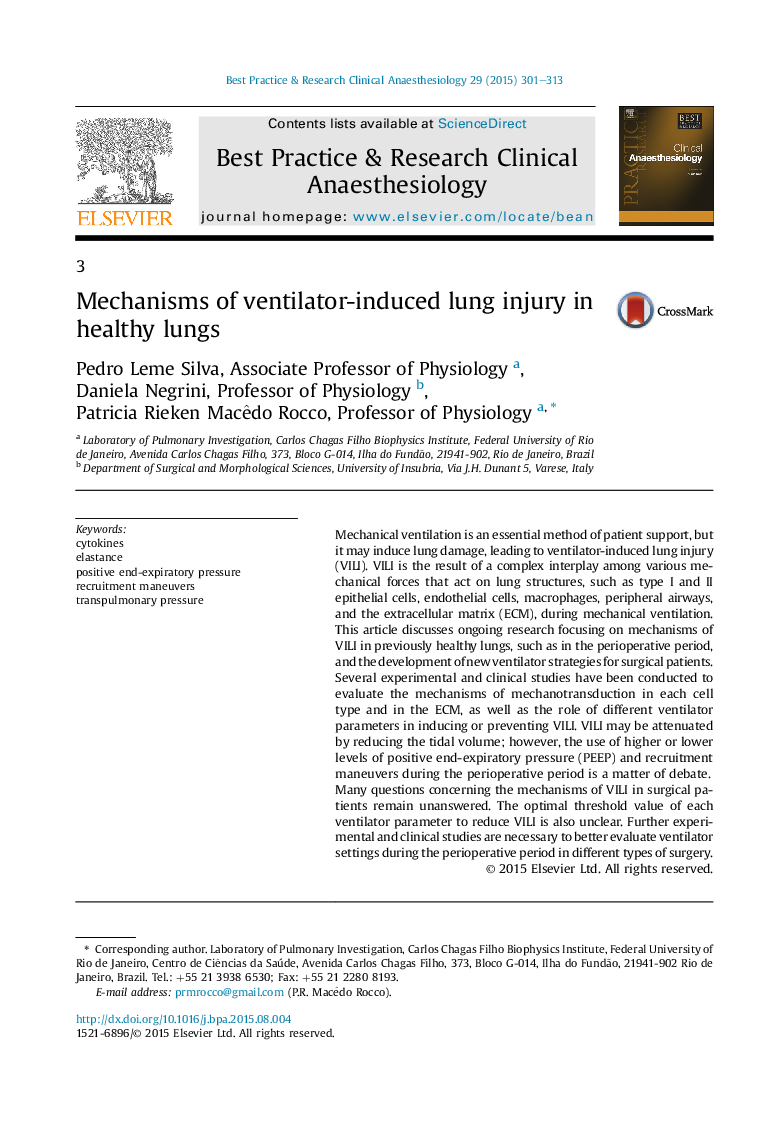| Article ID | Journal | Published Year | Pages | File Type |
|---|---|---|---|---|
| 2748354 | Best Practice & Research Clinical Anaesthesiology | 2015 | 13 Pages |
Mechanical ventilation is an essential method of patient support, but it may induce lung damage, leading to ventilator-induced lung injury (VILI). VILI is the result of a complex interplay among various mechanical forces that act on lung structures, such as type I and II epithelial cells, endothelial cells, macrophages, peripheral airways, and the extracellular matrix (ECM), during mechanical ventilation. This article discusses ongoing research focusing on mechanisms of VILI in previously healthy lungs, such as in the perioperative period, and the development of new ventilator strategies for surgical patients.Several experimental and clinical studies have been conducted to evaluate the mechanisms of mechanotransduction in each cell type and in the ECM, as well as the role of different ventilator parameters in inducing or preventing VILI. VILI may be attenuated by reducing the tidal volume; however, the use of higher or lower levels of positive end-expiratory pressure (PEEP) and recruitment maneuvers during the perioperative period is a matter of debate.Many questions concerning the mechanisms of VILI in surgical patients remain unanswered. The optimal threshold value of each ventilator parameter to reduce VILI is also unclear. Further experimental and clinical studies are necessary to better evaluate ventilator settings during the perioperative period in different types of surgery.
